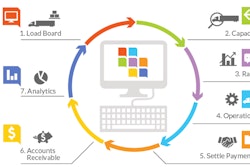
Increasingly stringent regulatory compliance standards governing third-party relationships are becoming the order of the day in a number of industries, including banking, pharmaceutical and health care. Regardless of the industry, the move toward closer oversight of third parties is accompanied by increasingly complex service delivery models, and supply chains with multiple vendors and sub-contractors. In other words, the rules of regulatory compliance are getting tougher precisely at a time when the game is becoming more complicated.
In this environment, global enterprises are recognizing the importance of enhanced vendor management and governance (VMG) capabilities. Specifically, they’re looking to oversee each provider in the service delivery mix, while at the same time, enhancing collaboration among all providers and aligning the overall sourcing model with the business. An effective VMG function can provide the global transparency and local insight required to connect myriad stakeholders, align operations with business strategy and position the enterprise to address today’s regulatory compliance challenges.
It is key to understand the regulatory rules and requirements to be followed, and then define internal policies that align with them. The real challenge, however, lies in converting those policies into rigorous and sustainable processes that operate seamlessly and consistently across multiple providers and business units. The compliance oversight of any given third party involves a wide range of functions, including operational, contractual, financial and legal, as well as different business groups. Interactions between these various stakeholders can result in gray areas regarding responsibilities. For example, does the task of assessing a particular provider’s sub-contractor reside with the vendor management team or with legal?
The VMG function often struggles to achieve the enterprise-wide perspective required for effective oversight. Traditionally, VMG was designed as an extension of sourcing procurement, and as such, often reverted to a narrow focus on cost. This tactical role limited VMG’s involvement in pre-contract planning and development, which is essential to gaining insight into the myriad service provider touch points that underlie the service delivery model.
Recognizing the strategic importance of VMG, many enterprises are elevating the function to provide oversight of key supplier relationships and transparency deep into the chain of service delivery. From a regulatory compliance perspective, this enables vendor management to identify potential risks across the service delivery ecosystem at both a macro level, in terms of mobilizing global response to a new compliance requirement, and at a granular level, in terms of identifying a specific vulnerability with an individual provider.
Top-performing organizations are also rethinking their approach to sourcing VMG. The function was traditionally retained by the client organization. While this approach enables consistent oversight of multiple agreements, mature enterprises are increasingly exploring the potential benefits of engaging third-party specialists to manage the day-to-day oversight of transactional activity and collection of operational data. Under this model, the client organization retains strategic, value-add activities, and hands off routine, administrative and tactical activities to the provider.
Outsourcing vendor management provides several key benefits:
- Process discipline. From a regulatory compliance perspective, a third party specializing in VMG is better positioned to drive the required process discipline, standardization and consistency.
- Cost. In terms of cost, outsourcing VMG results in annual savings that average approximately 30 percent, primarily as a result of labor arbitrage that leverages cost-efficient offshore resources and delivers a five-to-one improvement in retained full-time equivalent (FTE) requirements.
- Scalability. Since additional workload can be absorbed primarily by offshore resources, the model is also more scalable.
Whether conducted internally or outsourced, the increasingly strategic role of VMG requires that it be involved early and often in the sourcing lifecycle, so that the frameworks and communication guidelines essential to effective third-party oversight are clearly defined and baked into the relationship, rather than tacked on as an afterthought.















